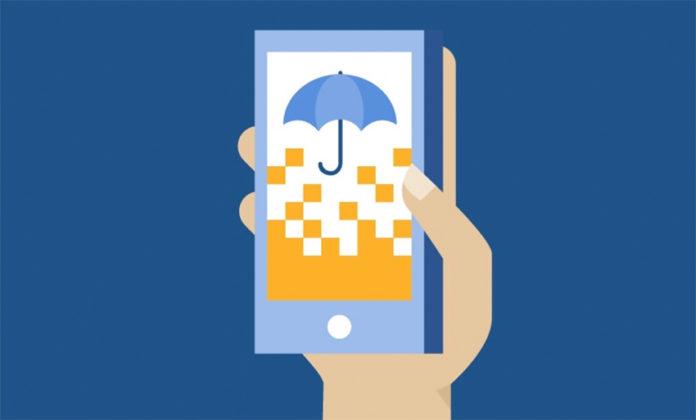Mobile technology has become an integral part of the digital experience since its inception less than 10 years ago, and it has single-handedly revolutionized the way in which companies big and small do business – from marketing and advertising to managing operations. Over 94% of small businesses use mobile technology to conduct business to save time and money, increase sales, and obtain new customers. Not wanting to be left behind, insurance providers – from auto and life to business and health – are investing in mobile technology in order to extend their services to the mobile channel, attract new mobile-oriented customers, and modernize customer service tools to increase customer satisfaction and the customer experience.
Bringing Insurance to the Mobile Marketplace
According to the Pew Research Center, 64% of Americans own a smartphone, with mobile technology quickly becoming the preferred medium for accessing information, surfing the web, and shopping. As such, this technology has been a boon for businesses to cater to mobile users and engage with customers like never before. According to a Boston Consulting Group report, the average small- to medium-sized business that makes mobile technology a priority will typically see its revenues increase twice as fast as similar companies that do not.
In order to satisfy customers’ evolving technology needs and improve the customer experience, insurance providers have sought to extend their services to the mobile channel by developing mobile apps and offering tools such as mobile bill pay and report a claim services. Furthermore, insurance providers that invest in enhanced back-end mobile technologies, including offering multi-channel integration, customer data analysis, and digital interaction, are better poised to woo mobile-savvy consumers away from more traditional insurers that do not offer these services.
Vying to Attract the Mobile-Savvy Millennial
Young adults aged 18 to 29, of whom 85% are smartphone owners, are the most likely to have incorporated mobile technology into their lives and use their mobile devices to obtain information or make transactions. According to the 2016 World Insurance Report, unlike older insurance customers, who typically rely on interactions with their insurance provider via a desktop, Millennial customers embrace all communication channels, most notably mobile. Millennial customer are more likely to engage with their insurance provider via alternative channels, such as social media, and interact with their insurance providers two times more often than non-Millennials. The report also found that those Millennials already comfortable with mobile technology were more likely to choose an insurance provider that offered mobile services over ones that did not.
As a result, insurance providers are working to utilize mobile technology to attract and retain younger potential customers. Competition between providers has increased, particularly in the auto insurance industry, as leading insurers, including State Farm, Progressive, Geico, Liberty Mutual and Allstate, vie to offer unique mobile tools that stress simplicity, convenience, and personalization.
Modernizing Insurance Tools for a Better Mobile UX
There are over 4.0 million applications available to smartphone and tablet users, with thousands more added each day. Despite the sheer volume of apps available, a study by Nielsen found that the average smartphone user accesses only 27 different apps per month. As a result, the challenge for most businesses is not only developing a mobile app that is compelling enough to download, but easy, useful, and convenient enough to actually use.
For auto insurance providers, including State Farm, Progressive, and Allstate, these mobile offerings include streamlined claims service, driver monitoring and feedback, location-based fuel information, and even motorcycle maintenance and trip logs. Homeowners’ insurance providers, such as Liberty Mutual, have also strived to engage mobile-savvy consumers beyond renewal time by offering moving and organization tools, while health insurers have worked to take the anxiety and stress out of healthcare by empowering customers with accessible information and service and pricing transparency.
For example, Aetna encourages customers to use a mobile app called iTriage to determine whether symptoms are life-threatening and where to seek care, saving both the insurer money and relieving the strain on local emergency rooms. This ultimately opens the doors to a better overall experience for patients when they reach their health care provider.
These five companies have successfully developed mobile technology strategies that are disrupting the traditional insurance model:
State Farm: State Farm maintains over 80 million U.S. policies, primarily within the auto and homeowner sectors. In addition to optimizing its general website for mobile, the company offers several mobile apps, including the Pocket Agent, which allows you to view proof of insurance and submit a claim, and Driver Feedback, which tracks a user’s driving habits. However, it also offers other unique tools such as CarCapture, a car-shopping tool developed with car data website Edmonds. After users snap a photo of a car, the app provides detailed information regarding the vehicle, starts an insurance quote, and lists nearby dealers that sell that particular model. State Farm also offers customers ways to save on their policies by using apps such as Steer Clear and Drive Safe & Save, the latter of which uses the smartphone’s Bluetooth beacon to collect basic information about driving habits. While these services offer customers a variety of tools to save money or manage their driving habits, they also provide the company with customer data, allowing it to better tailor its products to, and predict the needs of, the new mobile-savvy customer.
Aetna: Aetna is one of the largest health insurance companies in the U.S. and is an industry leaderwhen it comes to mobile technology, having advised the Obama administration on improving Healthcare.gov. In addition to the previously mentioned iTriage app, Aetna offers the Aetna app to help customers more easily search for doctors and dentists and urgent care facilities, manage benefits, complete a health assessment, and speak with a certified doctor. Aetna also uses mobile-friendly social media, such as Twitter, to efficiently respond to customer questions and concerns. By redirecting simple or non-urgent concerns away from costlier call center channels, they are saving the company money and improving customer experience.
Liberty Mutual: In order to appeal to younger mobile-savvy Millennials, Liberty Mutual offers a few non-insurance apps, such as the CarZen auto-buying app and the Training Zone game app (as well as several insurance-based apps). In the event of an auto accident, the Liberty Mutual Mobile App allows users to take photos and even record a voice note to remember key details, as well as exchange contact and insurance information. It also offers the Home Gallery App, which allows anyone, not just its customers, to take photos and scan barcodes of personal belongings in order to quickly and easily catalog items and create an interactive home inventory in case of damage or theft. This is considerably more appealing for younger home insurance customers. Previously, policyholders would have to manually document and take photos of belongings they wanted covered.
AIG: After a study found that 85% of business respondents were concerned about cyber risks, such as hacking sensitive customer information, AIG revamped its cyber insurance product to include CyberEdge. This all-in-one cybersecurity risk-management and liability insurance policy solution helps businesses monitor and prevent cyber security breaches. The company developed a companion CyberEdge mobile app, which features a data breach threat map and other innovative features to keep a business’ (and its customers) information safe and secure. Despite business’ concerns of cyber risk, the cybersecurity insurance market is relatively small, with only 9% and 6% of retail and fortune 1000 companies reporting they have this type of insurance, respectively. By developing comprehensive cybersecurity insurance product with powerful mobile tools, AIG is positioning itself for future growth, particularly as cyber threats and security breaches become more prevalent.
Allstate: In addition to the mobile apps Allstate Mobile, Drivewise, Allstate Motor Club, and Digital Locker, Allstate offers the GoodRide mobile app, which is specifically targeted to motorcycle operators. GoodRide allows motorcyclists to log trips, including route, time, and mileage tracking. It also keeps a maintenance log and plan trips based on weather and fuel station locations. Allstate hopes that offering this niche app will not only gain motorcycle insurance business, but also result in the cross-selling of other insurance products to motorcycle insurance customers.
Preparing for the Future of Mobile Insurance
The insurance industry is poised for continued innovation in the near future. New developments in the just-in-time insurance market, as well as new types of insurance providers, such as peer-to-peer companies, including Friendsurance and Lemonade, and even technology firms, includingGoogle, are expected to be hyper-focused on providing the types of services that Millennial consumers want – and in the way they want to receive them. Customers will continue to strive for greater connectivity and interactions with their insurance providers via mobile channels. The transition to these channels will not only deepen customer satisfaction and experience, but also allow insurers to more efficiently operate their businesses and more fully understand customers in order to meet their needs.





